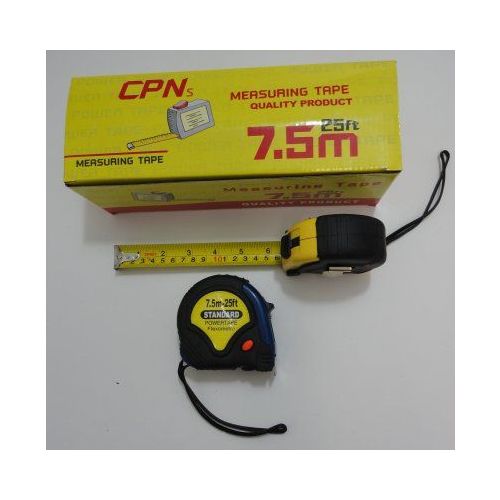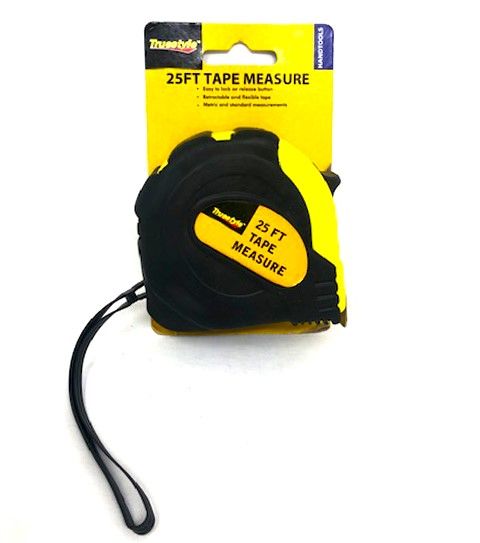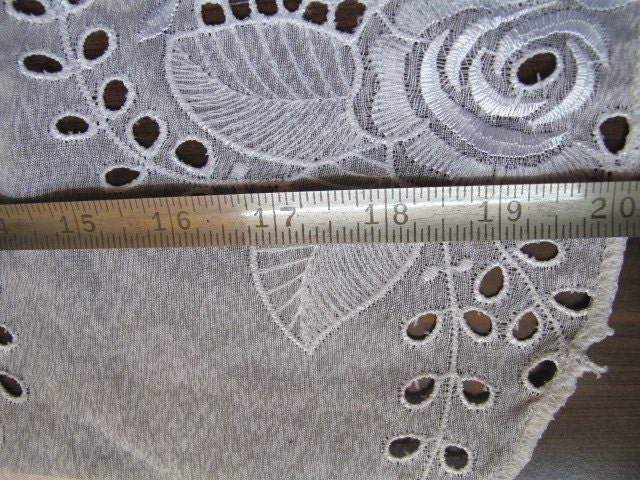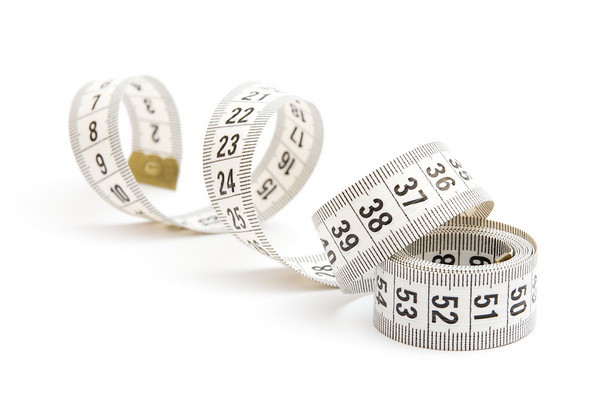Here's a really neat trick for reading rulers or meter sticks in metric units. This only works with metric units, not U.S. customary units like feet and inches. A meter stick measures one meter and shows only metric units of measurement of millimeters and centimeters. Meter sticks are used to measure objects that are larger than a piece of paper.
Remember that you can use centimeters and millimeters if the object is smaller than a piece of paper. A meter stick is a little over 3 feet long, because a meter is approximately 3.2 feet. All of these are present on the meter stick – essentially, a giant ruler that is a little more than 3 feet long.
Just like a ruler, you can use the meter stick to read measurements on real-life objects. In the US, the standard tape measure will measure in Imperial units—that's feet and inches—while the rest of the world uses metric tape measures to measure in meters and centimeters. No matter which measurement system your measuring tape follows, the basic anatomy of the tool and how to read it remain the same. A tape measure is effectively a flexible ruler that is usually sprung on a retractable mechanism for easy storage, helping to measure the distance or size of any space or object. With linear-measured markings usually covering a number of different scales, a measuring tape can be many different materials.
Flexible fabric options are great for accurate measurements across circular or jagged surfaces. Measure tapes often have a floating tang or hook at the end, sometimes magnetic, to secure them in place when in use which is ideal if working alone or in awkward spaces. A tape measure usually has two different measurement systems on it. This is a mix of the inch system and the metric system. Most manufacturers have opted to use both systems, for whatever reason.
Even though modern-day measurements are usually taken in inches, some do not, so the calibrations stay. The top half of a tape measure is usually in inches, broken into eighth and sixteenth of an inch increments. The bottom half of the tape is divided into centimeters and millimeters. The large numbers on the top represent inches, while the little marks between the numbers represent increments of an inch mentioned earlier. For example, a 16-foot tape measure has 16-1 foot markers across the top and inch marks .
In some countries such as the UK, tape measures have both Imperial and Metric measurement markings. Until recently in the US, for example, all tape measures were in Imperial units, however the dual standard option is becoming more widely available. Most standard tape measures in the U.S. have markings that measure down to 1/16 of an inch. These are smaller, sometimes thinner markings, evenly spaced between the half-inch and inch marks on a tape measure.
On some tapes, quarter inch marks are the same size as eighth-inch marks. Remember that two sixteenths of an inch equals one eighth, two eighths of an inch equals one quarter, and 2 quarters equals one half. For example, the second eighth-inch marking after the inch marking is a quarter inch. Now that we've covered the basics it's back to understanding all of those little marks on the ruler. A standard tape measure in the United States is divided up into feet and inches.
The problem starts with the subdivision of the inches. In each inch there are a number of lines of different length. The longer the length of these lines, the larger the unit of measurement. Another tool to measure length is a tape measure. They are used to measure many of the distances that are too long for a ruler to measure easily and they are flexible, not rigid.
Examples of things you would use a tape measure for could be the distance across a room or an object that is very long like a large picture frame. Tape measures most commonly show length in inches and feet, but sometimes a tape measure has both customary units and metric units marked. We can use a ruler to measure centimeters and millimeters. On many rulers, we can see both the customary units of measurement and the metric units of measurement.
You can see inches, centimeters and millimeters on this ruler. Imperial measurement can be a bit tricky, especially or those who have been brought up using Metric measurement. The Imperial measure used extensively in the US, is split to feet, inches and fractions of an inch. The smallest unit marked is the 1/16th of an inch. The next is the 1/8th of an inch with a slightly longer hash mark.
These are longer again, and 2/8ths, 4/8ths, and 6/8ths are marked as quarter inches. The ½ inch is marked with a yet longer hash, and then each inch is marked with a hash that runs across the width of the measure, and a number. As we know, 12 inches make up a foot, and these are marked with 1F, 2F, 3F, and so on.
Sometimes you will find that on one edge that after the foot marker, the inches will increase again by single digits to reach 12 for a the next foot. On the other edge the inches will keep numbering incrementally, so 1ft 2 inches will register as 14 inches, and so on. At three feet, for example, it would measure 36 inches. A metric ruler or measuring tape is required to measure in millimeters. Millimeters are the smallest increment on a metric ruler.
Usually the numbers on a tape measure or meter stick mark the centimeters (the numbers 1, 2. 3 are marked for the centimeters). The millimeters are so small that they are not labeled. Instead, they are only indicated by the shortest mark as shown in the image below. Then, choose a tool that would measure these units.
This particular object can be measured with either a rigid or flexible measuring tool. Feet and yards are measured on both a yard stick and a tape measure, and meters are measured on meter sticks and most tape measures. Any of these three tools would be appropriate to measure the lamp. What is the smallest measurement on a tape measure? The smallest marks on a tape indicate one millimeter or 1/10th of a centimeter.
The large, bold markings on a metric tape measure indicate centimeters. The long mark in the center indicates a half-centimeter. To read a metric measuring tape, find the nearest whole centimeter to the end point.
To read a measuring tape, line the zero mark up at the edge of the item you're measuring, then stretch the tape all the way across the item. Try to keep the tape straight to ensure an accurate measurement! Then, look at the point where the tape meets the end of the item you're measuring and read the nearest large number. The large numbers are the units you're measuring, like inches or centimeters, and the markings between the large numbers correspond to fractions of that unit. On a tape measure that uses imperial units – as opposed to the metric system – the most prominent markings are typically the inch marks, designated by long, thin lines and larger numbers.
You will see a foot designation marked every 12 inches . Metric measurement is the simplest system of use. Building and construction practice calls for all measurements to be made in millimeters . These are the smallest unit on the tape measure scale, and are also marked with the smalles hash mark along the edge. As they are so small, they are generally not individually numbered on tape measures. Ten millimeters make up a centimeter and these are marked with a number, and a bigger hash mark.
Every tenth centimeter is highlighted, so they can be easily picked out. A hundred centimeters make up a meter , which is again clearly marked on a tape measure with a hash mark that will extend across the width. On the typical ruler the basic unit of measurement is 1/16″.
Smallest Measurement On A Tape Measure If you count the distance between two inch marks you will find sixteen lines. This is because an inch is 16/16th of an inch long. Because we like to express fractional numbers in the largest unit possible we call it one inch. So it follows that if you have 8 lines, or 8/16″ you have a half-inch or ½". And likewise, if you have 4 little lines, or 4/16″ you have a quarter inch and so on.
A ruler or measuring tape can be used to measure lengths in both metric and customary units. Here, the ruler is marked in centimeters along the top and in inches along the bottom. For measurements on construction sites or in industry, tape measures made of steel or glass fiber plastic are mainly used. If the model is made of steel, the scale is not printed on, but is usually engraved – so it cannot wear out. Depending on the length, the scale shows units such as meters, decimeters, centimeters and millimeters.
The lines on a tape measure are simple to read once one understands what they represent. The longest lines represent the number of inches from the beginning of whatever space is measured. This is usually a different color than the other numbers.
The bigger marks between each inch mark represent one-half of an inch. The markings between each half-inch mark represent a quarter of an inch, while the markings between each quarter-inch represents 1/8 of an inch. Between these 1/8 inch marks are 1/16 inch marks, with some tape measures breaking the inch down into 32nds and even 64ths. Rulers are used to measure things that are small. Most rulers show both customary units of measurement like inches and metric units of measurement, such as the millimeter and the centimeter. In the image below a pocket tape measure is presented, in which generally, they use the metric and imperial system on the same sheet.
The measurements at the bottom of the tape are metric units, they are in centimeters and millimeters . There are 10 mm in each centimeter and 100 cm in each meter. A 16-foot tape measure, for example, will have sixteen one-foot marks along its length and 192 one-inch marks . Each inch will have eight 1/8 inch marks and sixteen 1/16 inch marks.
In many cases these measurements are abbreviated, so 6 ′ 4 1/4 ″ means six feet four and a quarter inches. But if you DO end up needing or using a metric tape measure, know that for every meter, there are 100 cm and for every cm, there are 10 mm. Most metric measuring tapes only mark the cm for readability, so you'll need to count the number of ticks in between to get your exact measurement.
Sometimes, there are larger ticks in between each cm to denote 1/2 cm. Just as you would with a retractable tape measure, look for the spot where the end of the object or distance you're measuring lines up with the tape measure. If the tape measure stretches exactly halfway between the 27 and 28 inch markings, this means that your arm is 27.5 inches long.
On a tape measure labeled with imperial units, the most prominent marks are usually the one-inch marks. These are typically marked by long, thin lines and fairly large numbers. A tape measure, or measuring tape is a type of hand tool typically used to measure distance or size. It is like a much longer flexible ruler consisting of a case, thumb lock, blade/tape, hook, and sometimes a belt clip.
A tape measure will have imperial readings, metric readings or both. They are a common measuring tool used in both professional trades and simply around the home. The last type of measurement under the U.S. customary units is length, which is measured in inches, feet, yards, and miles. Under this system, the smallest unit of length is inches and the largest unit of length is miles, respectively. Despite the fact that both systems of measurement have the exact same purpose, U.S. customary units are entirely different from the metric system.
You'll be shocked by these 15 other fascinating facts about America you never learned. Some meter sticks will also have U.S. customary units on them, either on the flip side of the meter stick or marked out on the opposite side of the face from the metric measurements. From smallest to largest, the customary units you might see marked out on a meter stick are inches, feet and 1 yard. As with the 1-meter "mark," the 1-yard mark might not actually appear on the meter stick – but 1 yard equals 3 feet or 36 inches.
Next, think about what unit of measurement makes the most sense for measuring a wall. You can rule out very small units like inches, centimeters and millimeters. We can also rule out really large units like miles and kilometers.
The most appropriate units are either feet, yards or meters. Personally I much prefer this type of measuring tapes for sewing. Converting lengths for sewing is simple using a tailor's tape marked in both cm and inch. All you need to do is read the inch side corresponding to the number in centimeters.



























No comments:
Post a Comment
Note: Only a member of this blog may post a comment.